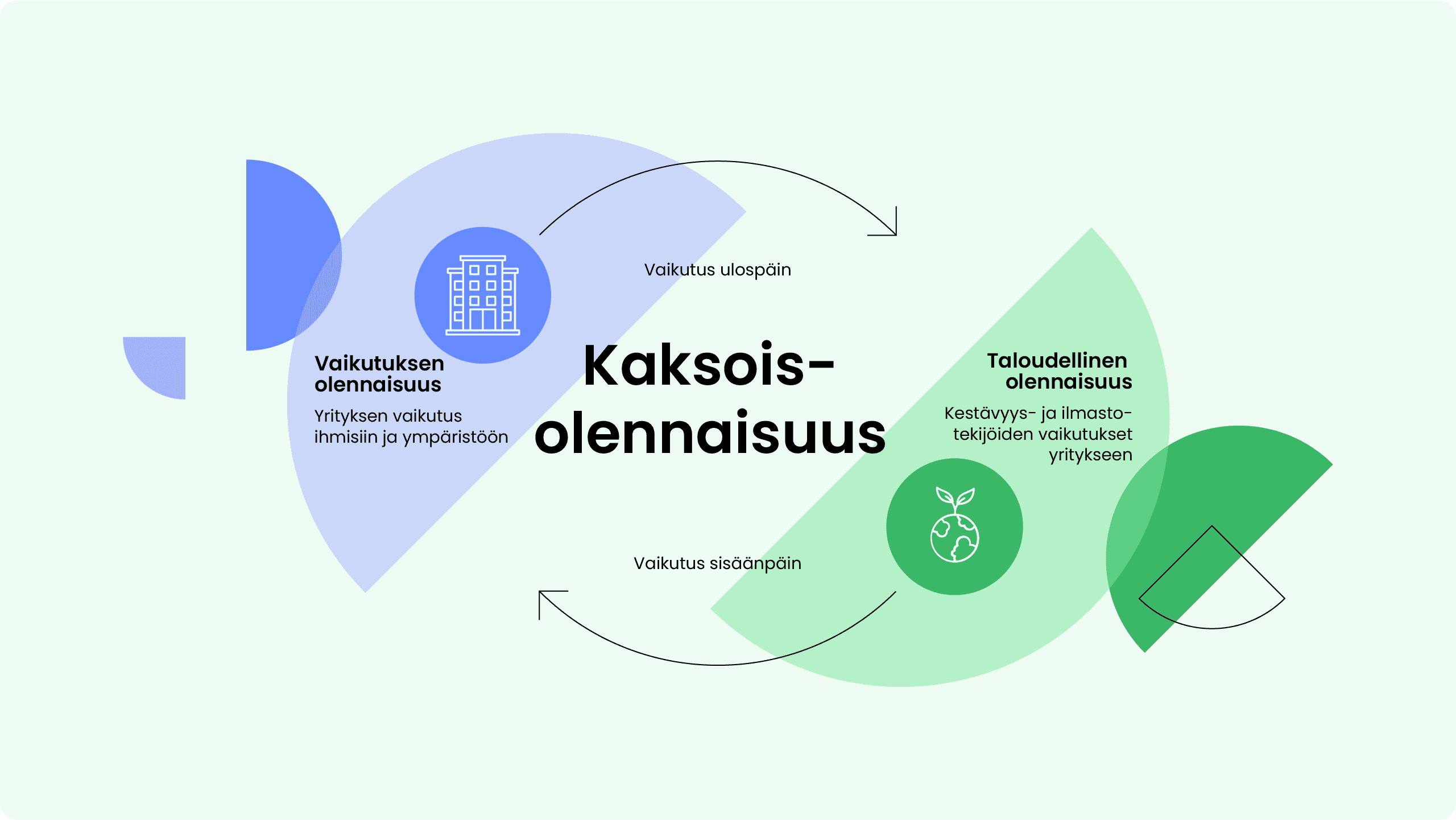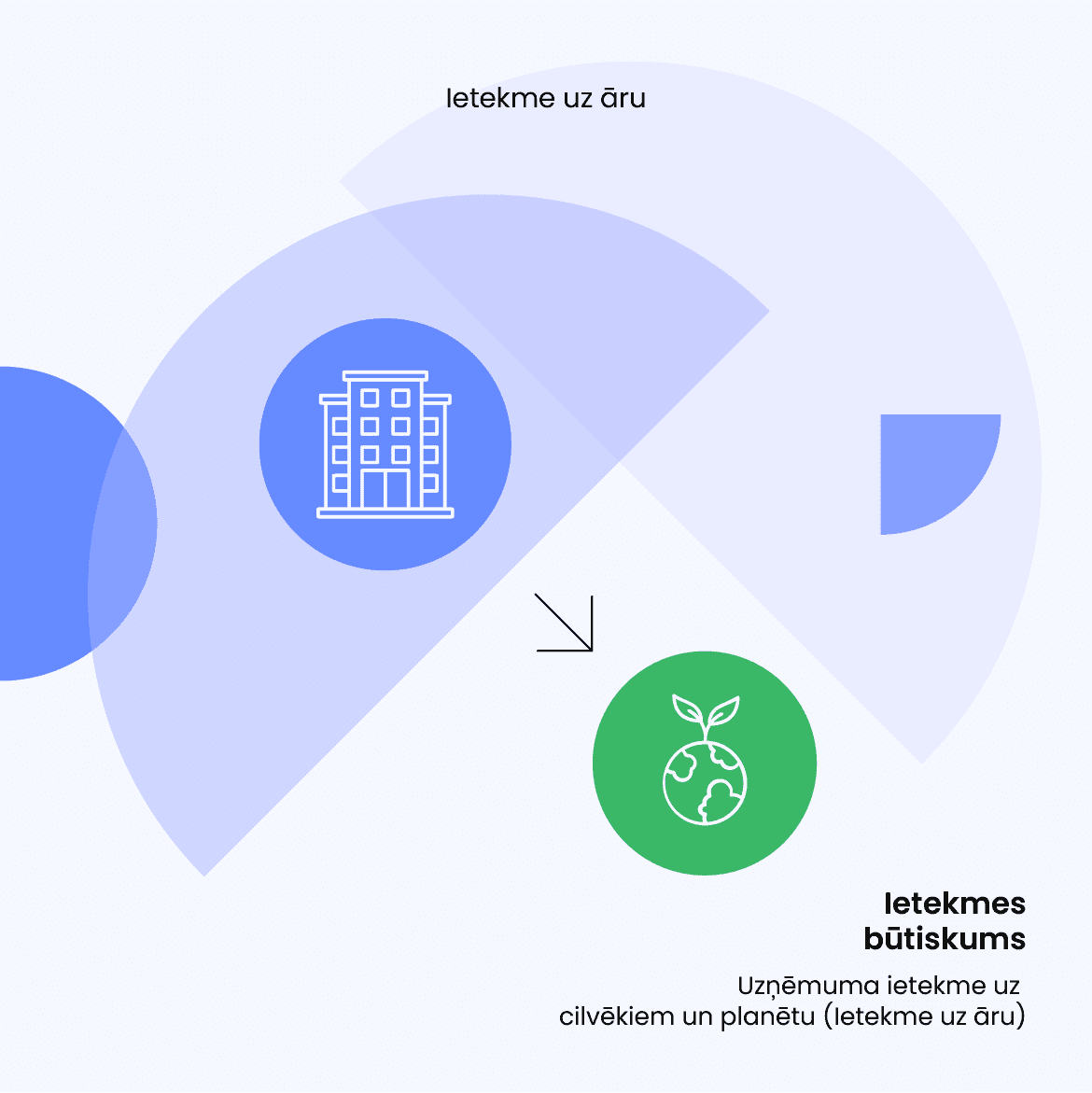Double materiality is a concept used in the context of corporate sustainability reporting. A double materiality assessment is a comprehensive evaluation that enables organisations to identify the sustainability matters that are significant both to their operations and their stakeholders. A matter is material if it is reasonably likely to influence the decision-maker. This information is critical and must be disclosed since omitting it could interfere with the stakeholder's decision-making ability. Only material matters should be disclosed in sustainability reports.

This aspect considers how the organisation’s operations affect the environment and society and should be considered first. It goes beyond just the financial implications and looks at the broader consequences of an organisation’s actions.
It involves impacts caused directly by the organisation and impacts that they are contributing to through operations, products, and services in its organisational relationships. Impact materiality assessment looks at both positive and negative impacts, as well as actual and potential impacts on people or the environment over the short, medium, or long term.

This refers to the traditional perspective where materiality is concerned with how various factors (e.g., climate change, environmental regulations, social trends) might affect an organisation's financial performance, cash flow, or financial position.
Sustainability matters are significant when they generate or may generate risks or opportunities that significantly influence future cash flow, business model, strategy, access to finance, and cost of capital. Material risks and opportunities are generally derived from the impacts and dependencies on natural, human, and social resources. Financial materiality is also considered in the short, medium, and long term.

Pollution - The impact of chemical spills in the production facilities.
Poverty - The impact of below-average salaries of its employees.
Climate - Risks associated with high levels of rain, hail, or other precipitation on organisational assets.
Workforce - Risks associated with not attracting experienced employees due to values or operating sector of the organisation.
To account for their broader impact on society and the environment, which is increasingly relevant for stakeholders like regulators, customers, and the public.
To understand and manage the risks and opportunities that sustainability issues pose to their financial performance.
Take the first step and assess crucial topics with ESG Tool today.
Start here